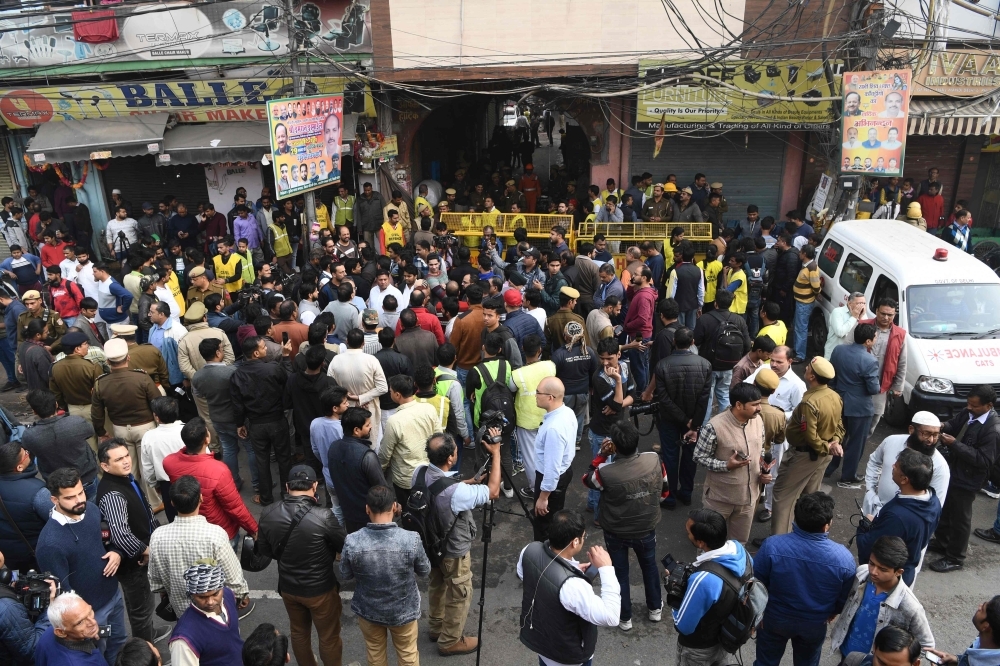
Most of the 43 labourers who died in the tragic fire accident that shook Delhi on Sunday, died due to asphyxiation. The NDRF teams working at the site and rescuing those trapped inside the building, reported that the building had collected large amounts of toxic smoke and hazardous carbon monoxide. They also added that due to the fact that most windows of the building were tightly shut, the poisonous gasses couldn’t be released and were trapped inside the already cramped and dimly lit interiors of the building.
The inhalation of large amounts of carbon monoxide and the subsequent suffocation led to the immediate deaths of several people much before the rescue teams could reach out to them.
The fire broke out when most of the workers were sleeping in rooms inside the building, which barely had any openings for ventilation. What added to the vulnerability of the workers was the fact that it did not have even the necessary clearances from the fire and safety departments.
As soon as the fire department was informed about the accident, thirty-five trucks were rushed to the spot.
The narrow lanes and crowded buildings made rescue operations extremely hard and made it almost impossible for the emergency personnel to reach out to the people who had been trapped inside. In the aftermath of the incident, many field experts suggest that often factories and small-scale industries are set up in old and overcrowded quarters of cities and towns, as the land is relatively sold at a much cheaper rate in such pockets. Such units often also served as sleeping and living quarters for the workers/migrant labourers coming from other small villages or in search of employment options.
For many such workers, sleeping over at a congested corner of the factory is nothing but an additional way to save money in place of renting up a separate accommodation. Like many other buildings that have been targets of massive accidents such as the one in Anaj Mandi, this one too was located in a congested neighbourhood, the owners did not procure the necessary safety documents nor did they have the necessary clearances from the safety and fire departments.
It wouldn’t be wrong to then say that the Delhi Anaj Mandi was almost like a catastrophe in the making. It is ironic that despite having several such industrial accidents in the recent years, building owners have bothered to take little cognisance of the matter and seem to be hardly bothered about adhering to rules and norms given by authorities of the municipal corporation, local administration, police and fire safety authorities.
This painful incident could have been avoided and precious human lives could be saved only if the rules were followed and the norms of safety were not violated by the authorities responsible to maintain fire safety of each of the buildings located in the congested neighbourhood.
The fault lies heavily on the shoulders of the owners of such buildings, who had shown scant regard for the rule of law. The people who died in the fire are those from the disadvantaged, marginalised and voiceless sections of the society. Is this the reason why despite such dangerous accidents, we choose to turn a blind eye to the safety issues of migrant workers? What kind of ambience do we give to migrant workers in towns and cities to which they flock in search of better life opportunities? We are risking the lives of ordinary men and women, many of whom are the sole bread winners for their families. When we show such insensitivity, callousness and a disregard for human lives- we fail our fellow beings as a civilised society.













